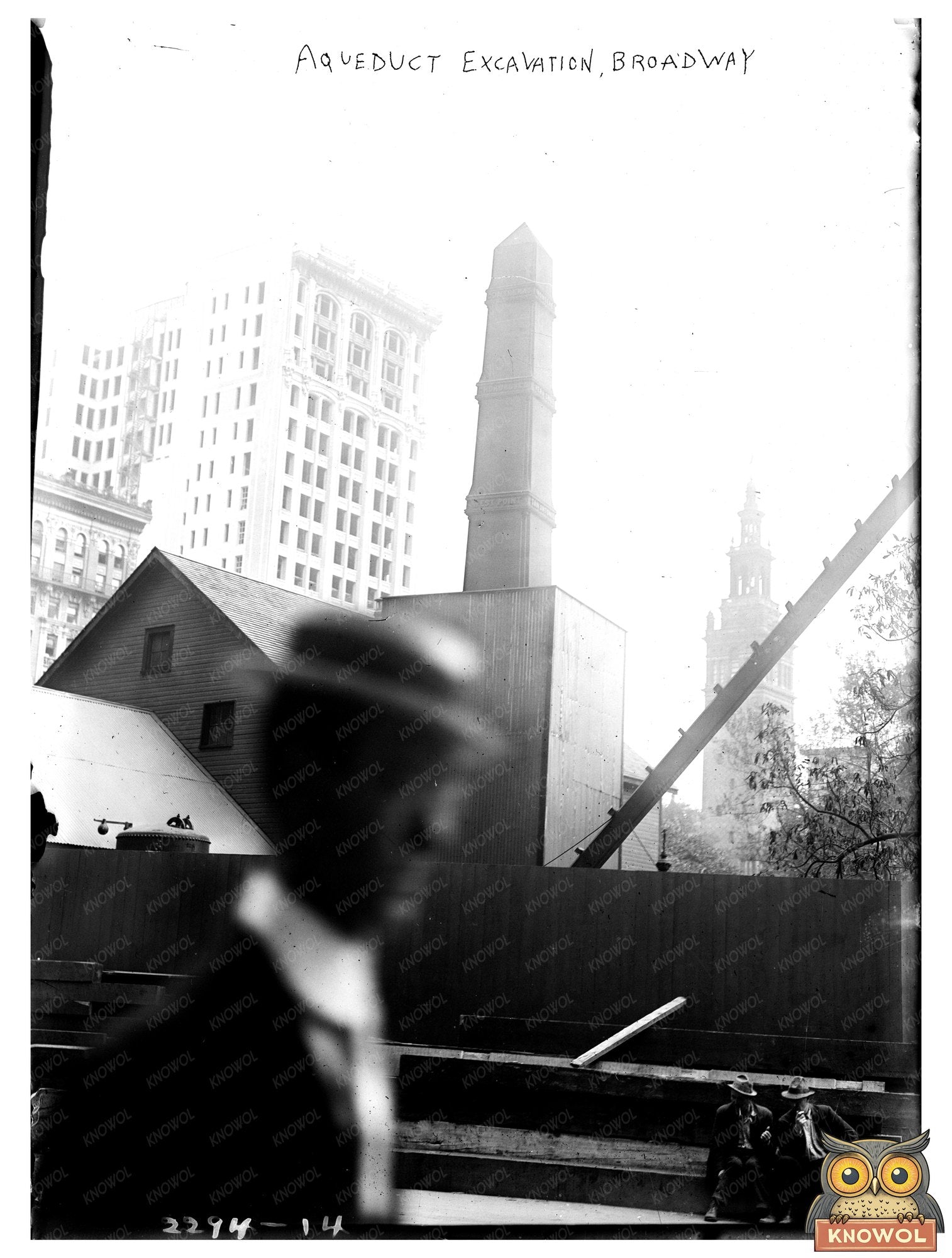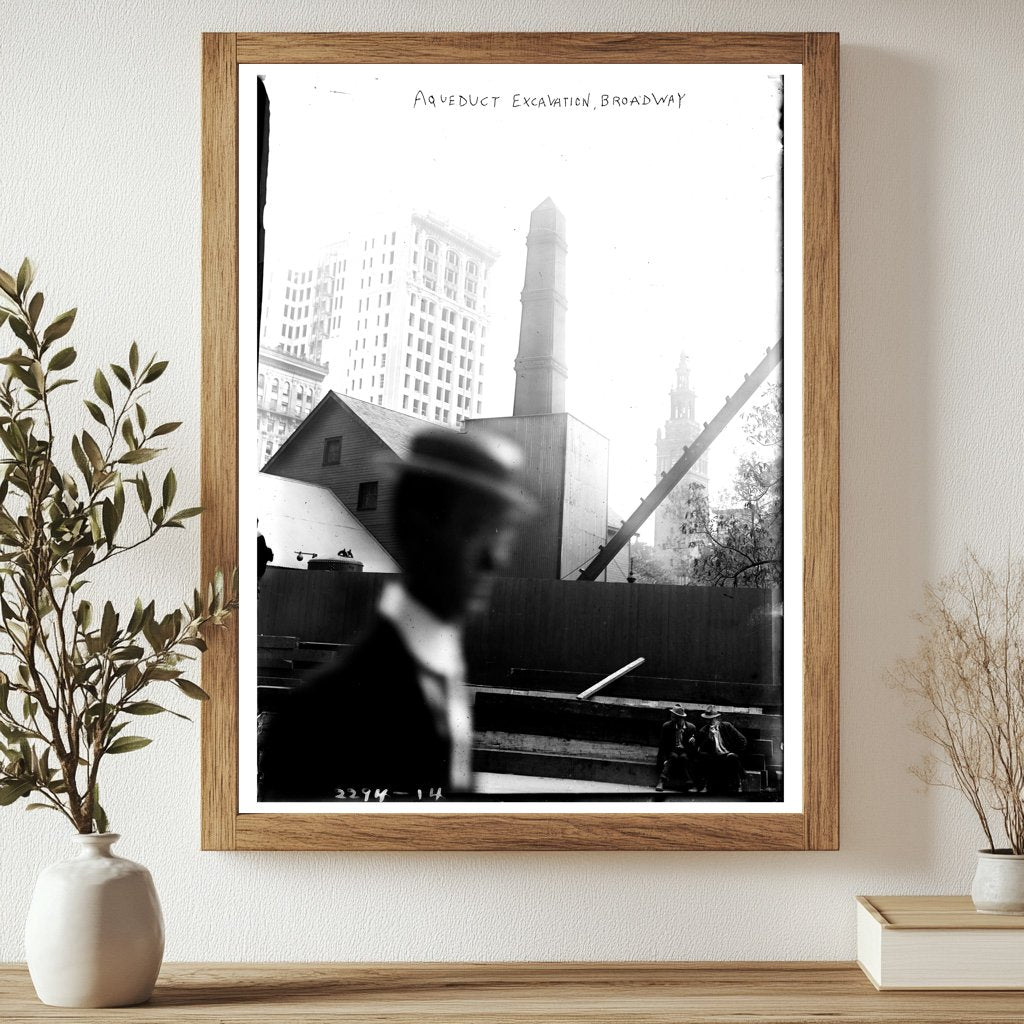


Historic Aqueduct Excavation on Broadway, 1910s
This photograph captures an aqueduct excavation on Broadway, taken between 1910 and 1915. It offers a glimpse into the significant infrastructure projects that shaped urban landscapes in the early 20th century. During this period, cities across the United States, including New York, were rapidly expanding, and the necessity for updated water transport systems arose. Aqueducts were essential for supplying clean water to growing populations, marking an important advancement in public health and urban living.
The image showcases workers engaged in the excavation process, highlighting the labor-intensive nature of infrastructure development at the time. The early 1900s saw a surge in public works projects aimed at modernizing cities, and photographs like this one play a crucial role in documenting those efforts. The aqueduct system had not only practical implications, such as improving sanitation and access to drinking water, but also represented a shift towards organized urban planning and engineering innovations that would support larger communities. These projects laid the foundation for modern municipal water systems and remain vital to understanding the evolution of American cities.

Historic Aqueduct Excavation on Broadway, 1910s
